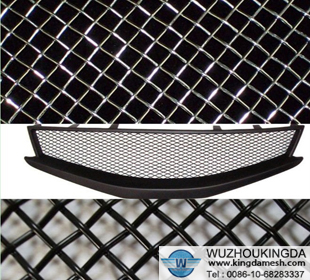Fan Grill Functions
Fan grills are often underestimated in terms of their contribution to both fan noise and airflow. It would stand to reason that the more raw material present on the grill would cause a more restricted airflow, which in turn would cause a drop in airflow and a rise in noise. In our experience however, the shape and pattern of the grill can have a huge impact on noise due to the different types of turbulence that can be caused.
While the number of possible grill designs is essentially limitless, we will be testing some of the most common designs that come included with fans and chassis, as well as some popular after-market designs. A few of these grills can also found cut into window panels or stamped directly onto the metal body of a chassis itself by the manufacture.
The wire grill is easily the top choice in terms of both noise and performance. There are a few points where it was not the top result, but in those cases it was close enough that it was within our estimated margin of error.
The mesh grill, while being one of the quietest grills, is also one of the poorest in terms of airflow. Interestingly, this grill is the only one whose results deviated largely between the noise and performance sections. This is likely due to the fact that it is a much different style than the other grills we tested. Instead of having relatively large frames and openings, the mesh grill has a lot of smaller openings, but placed very close together. So while it is very restrictive, it does not create the same type of turbulence noise that the other low-performing grill designs such as the angled slats and turbine.
- Prev : Security screens the strong protection
- Next:No Article



